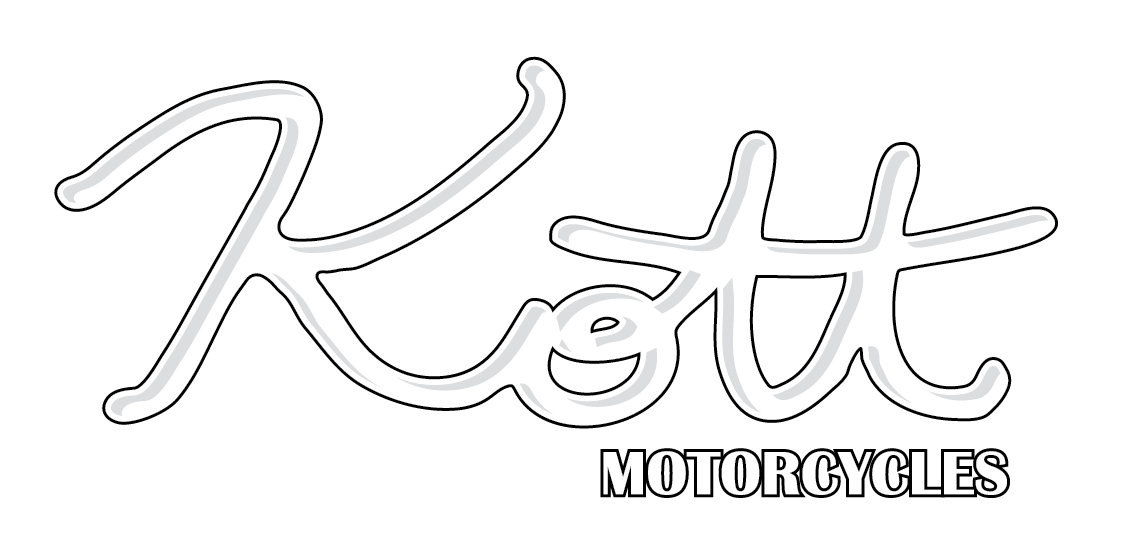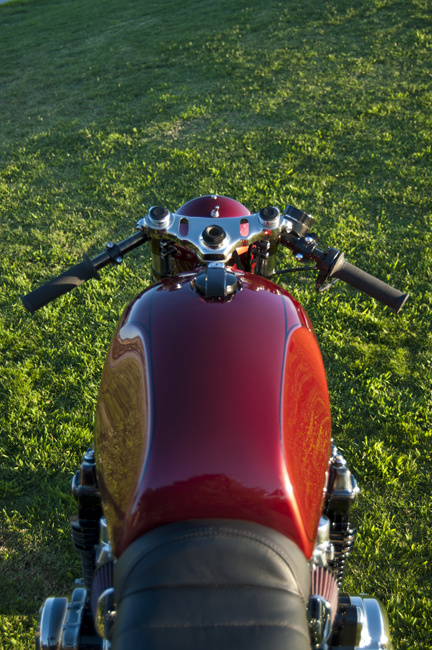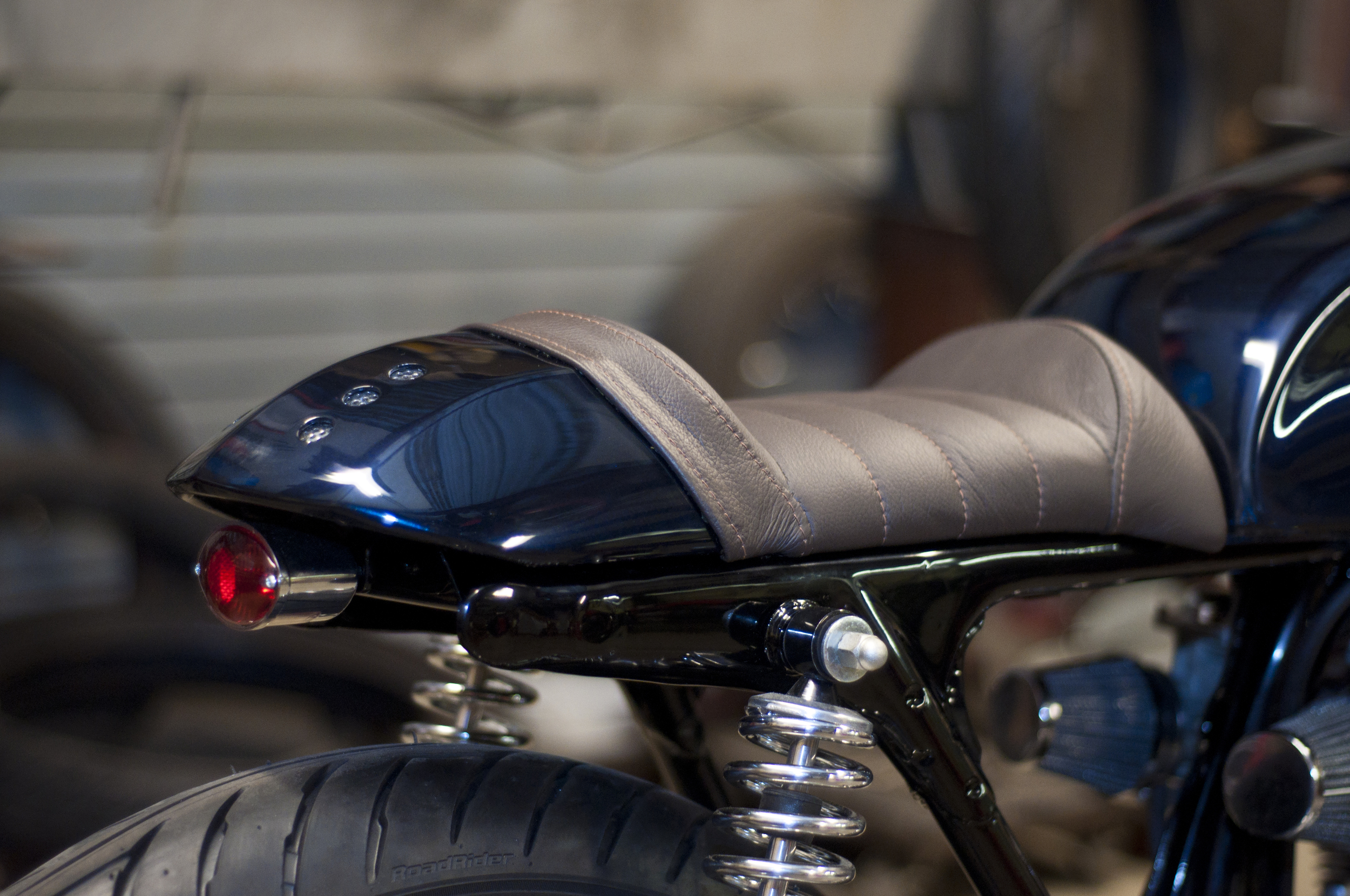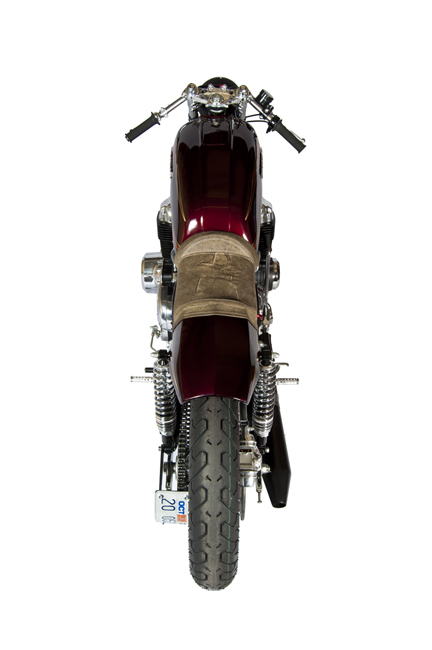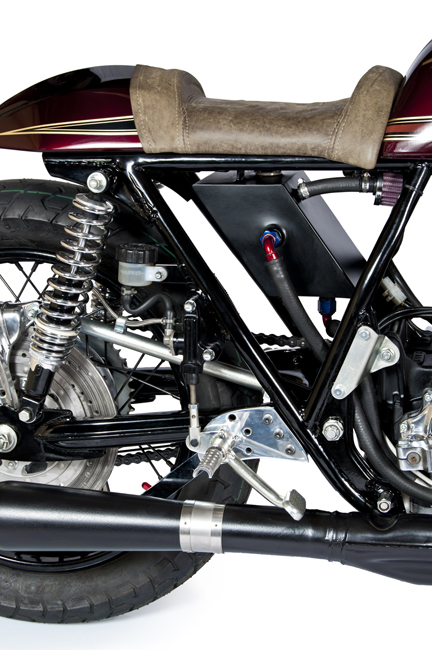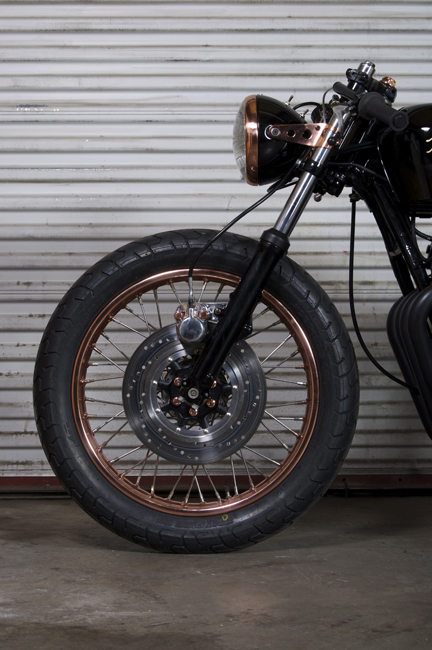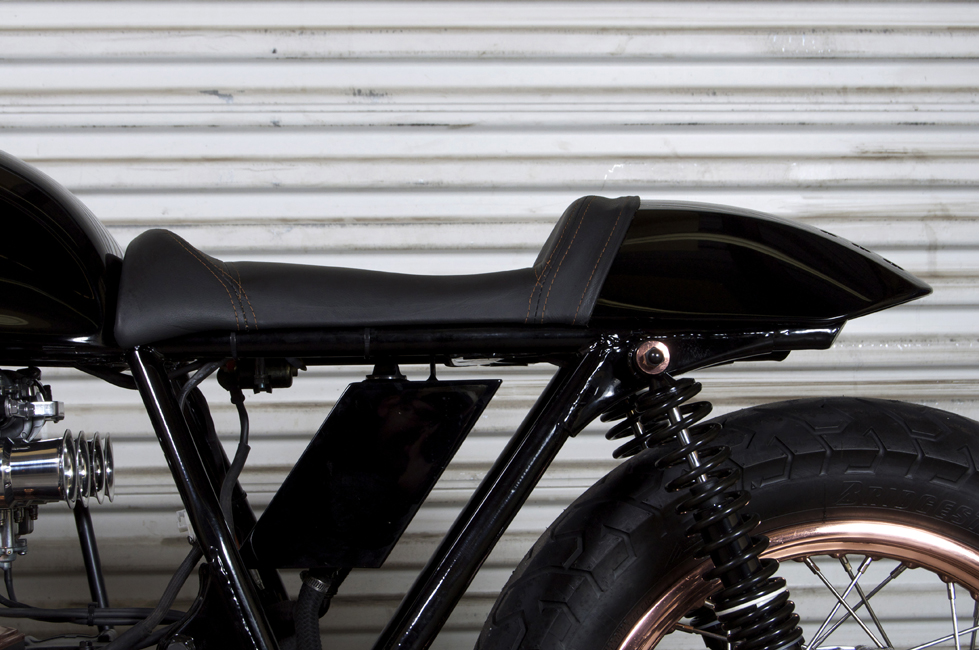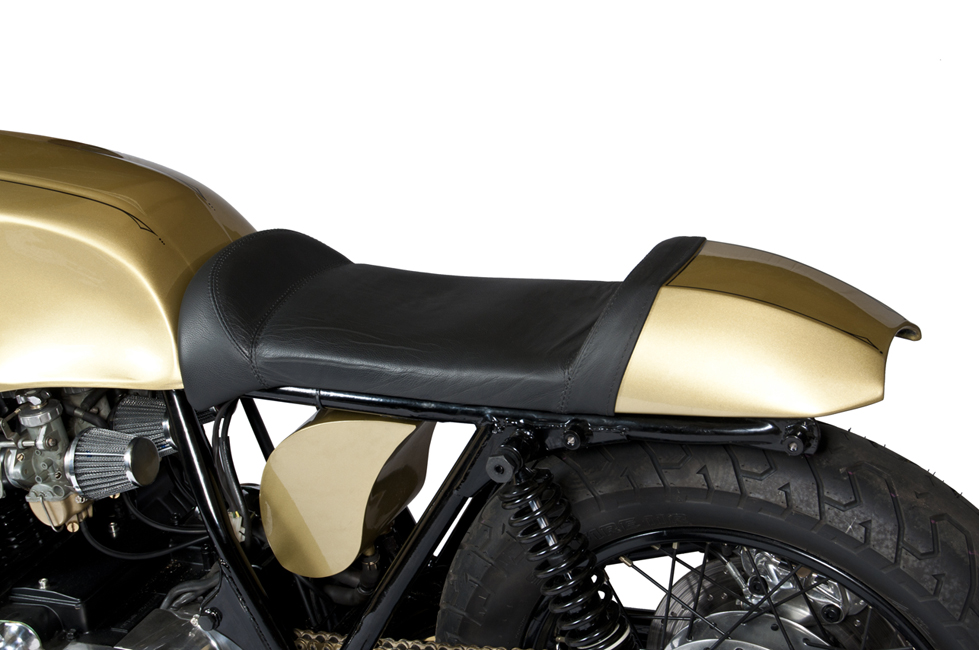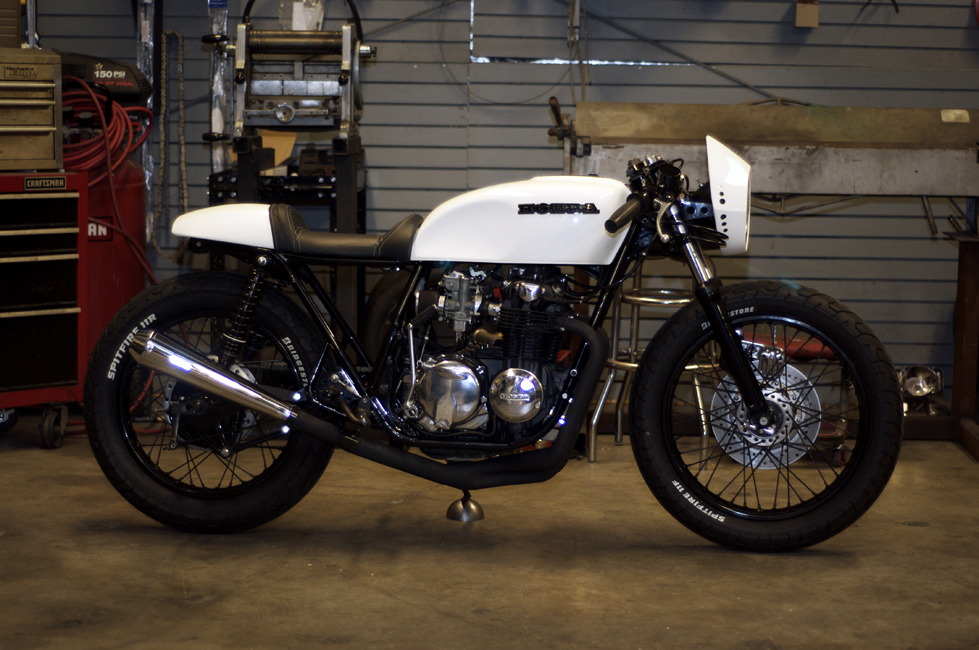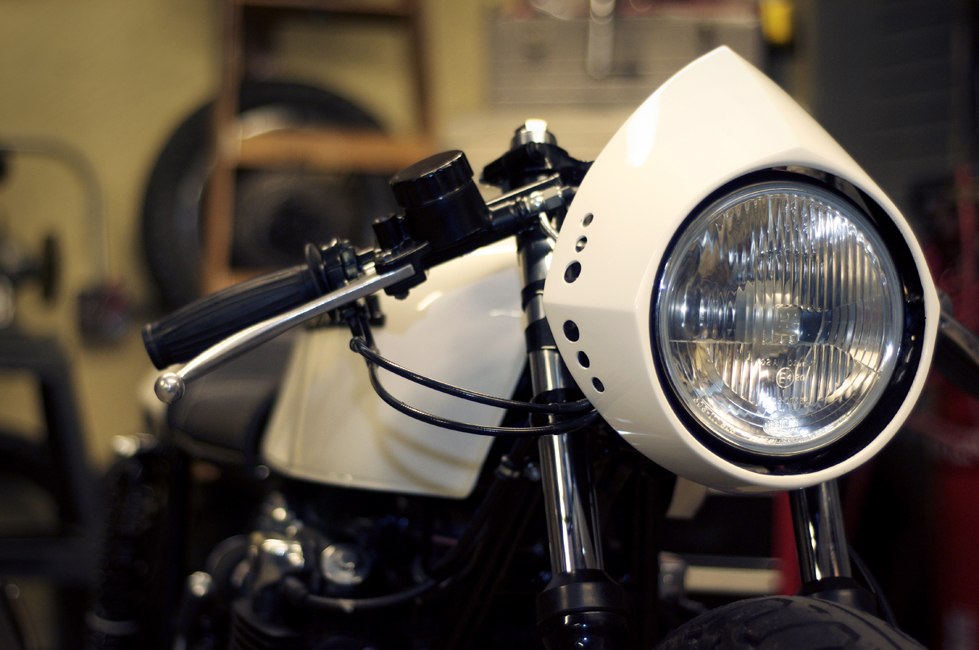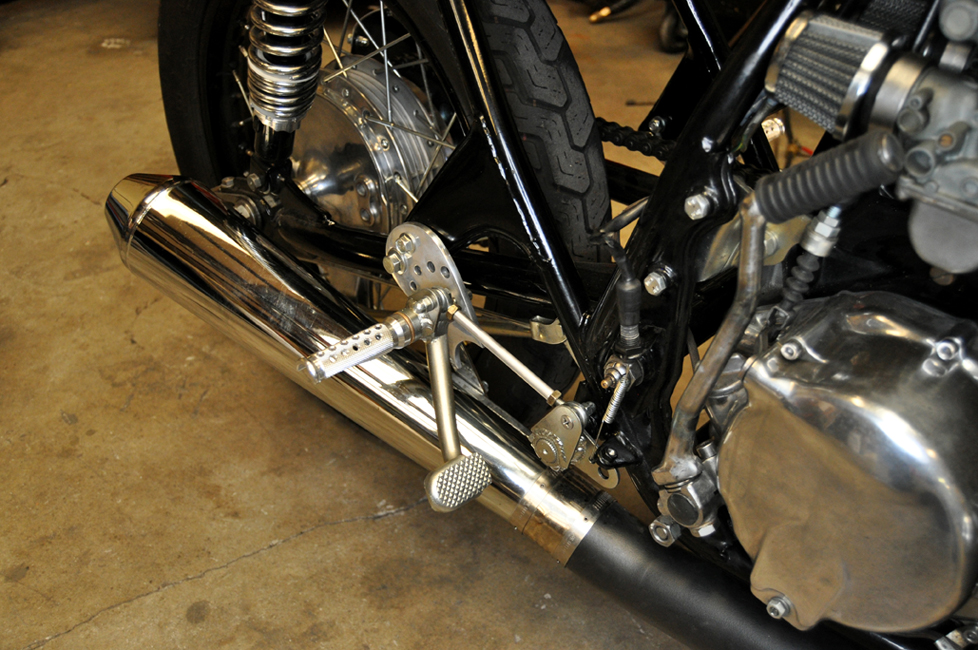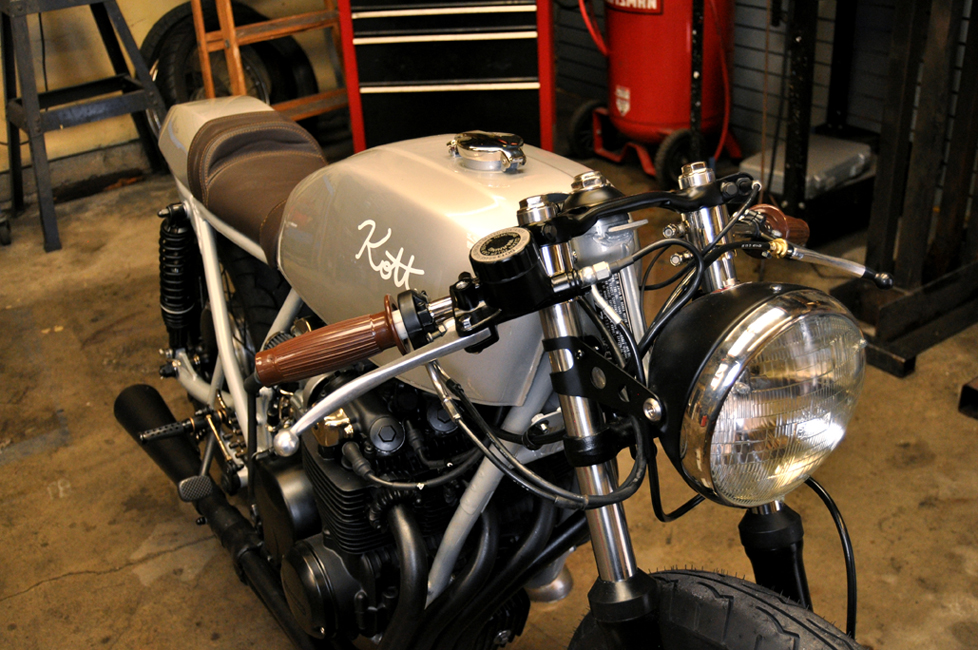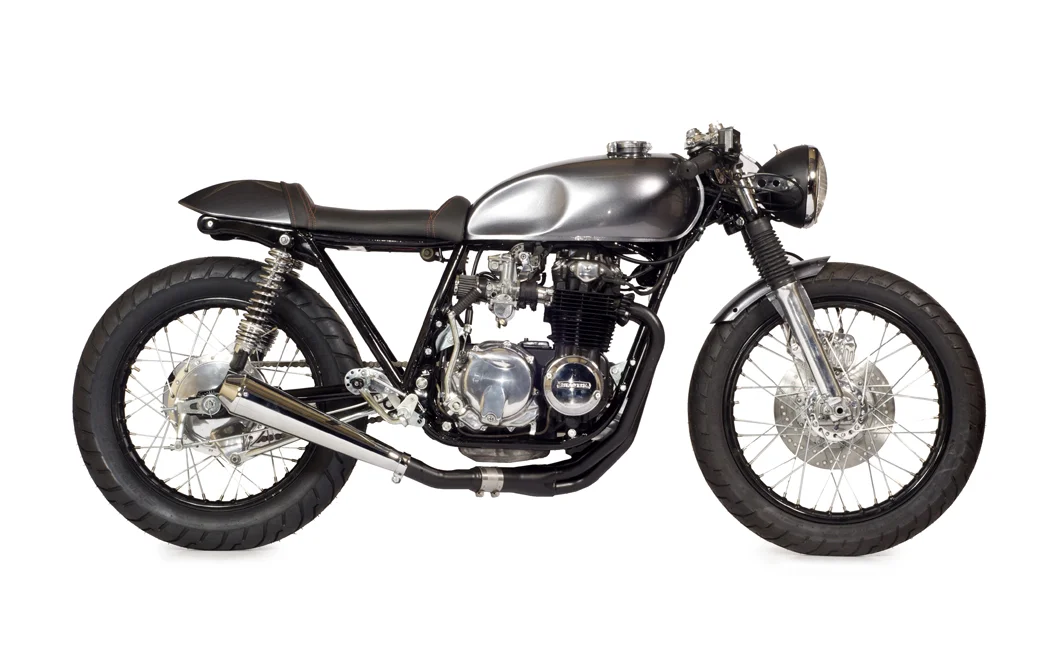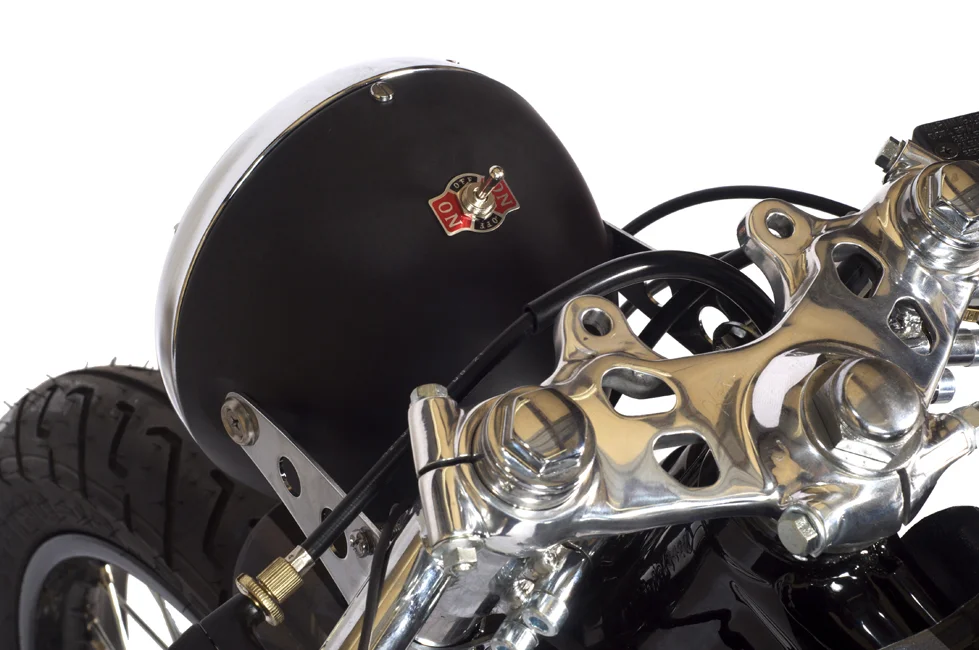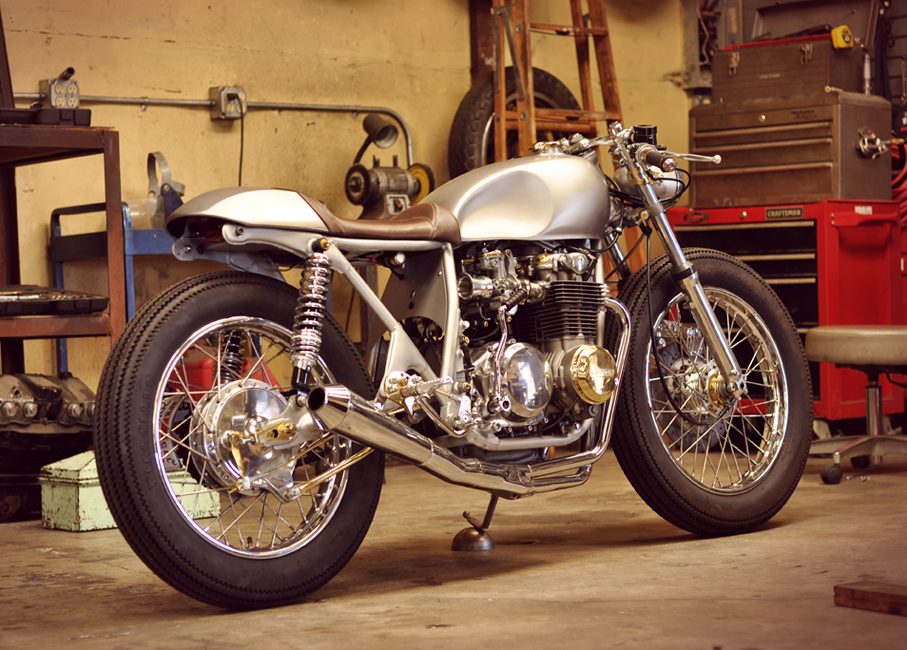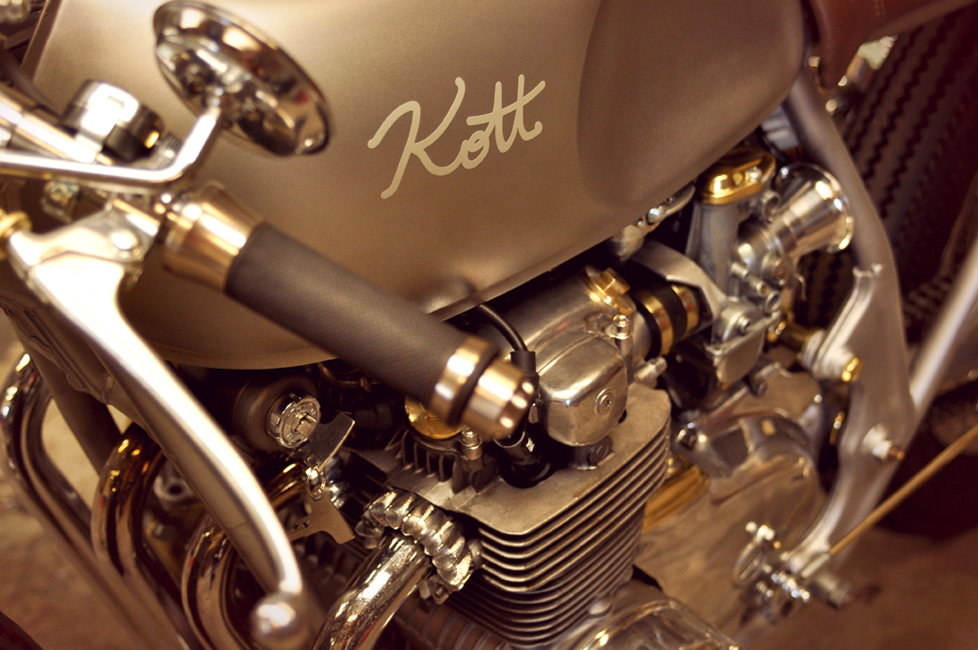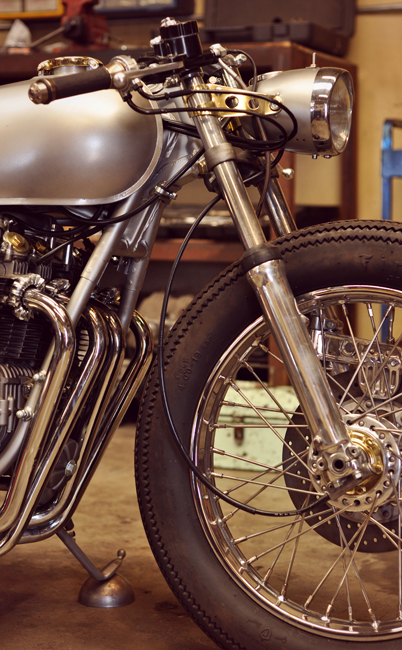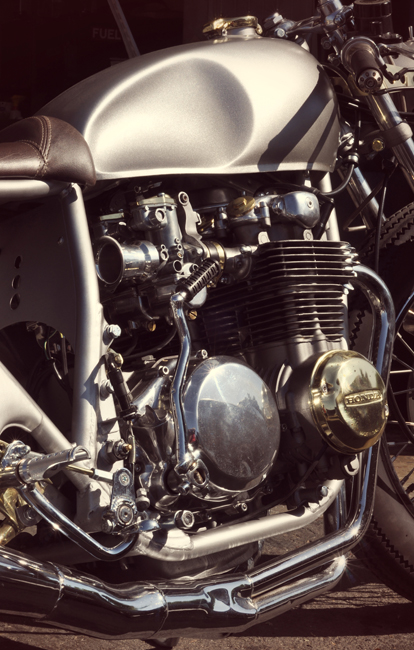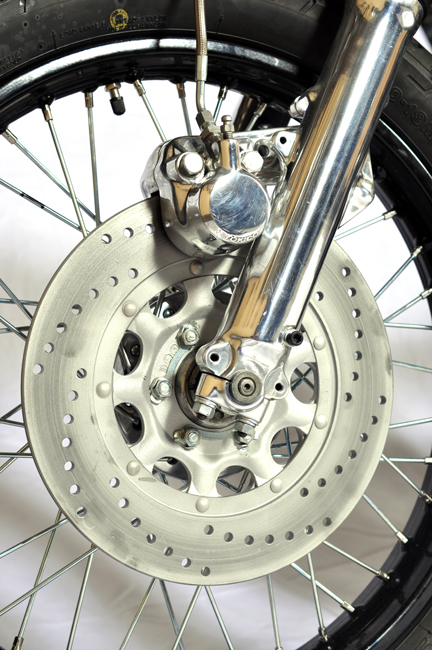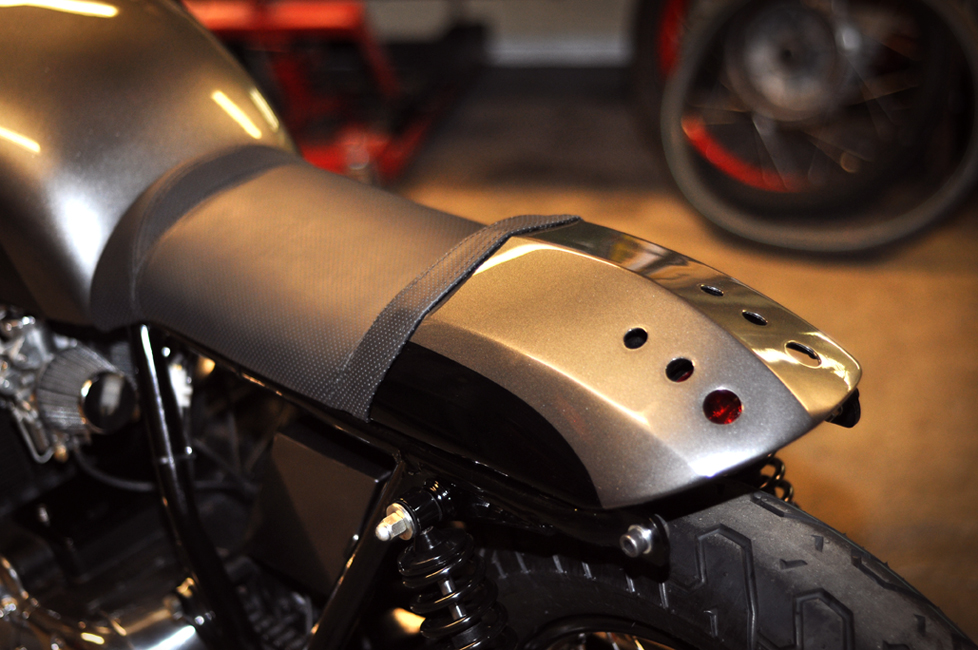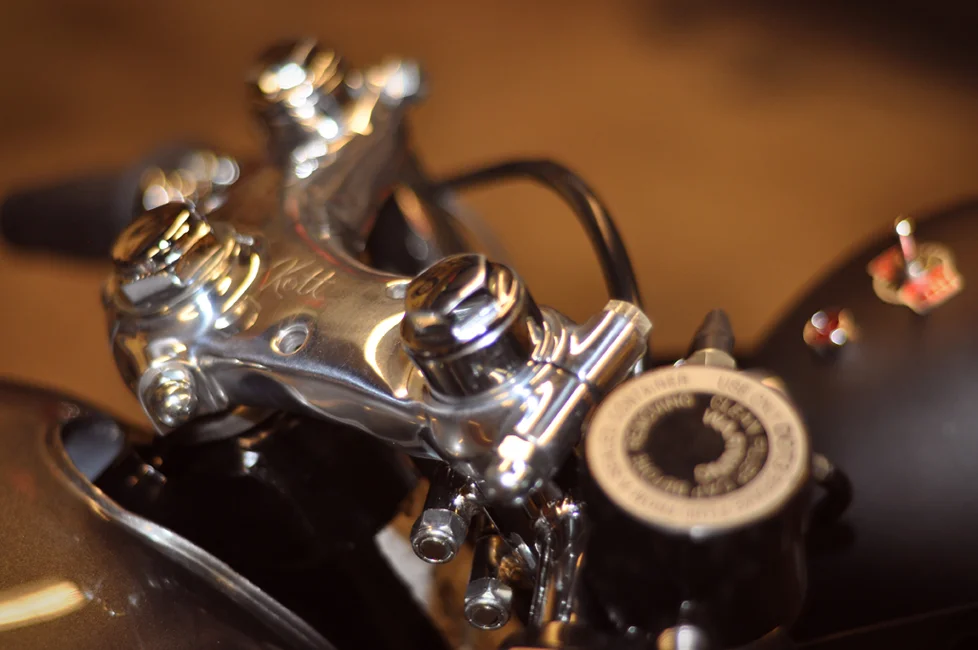The Valentino
/It has been a great summer of builds at Kott Motorcycles. An active approach has been taken toward seeking out builds that are a challenge to translate into truly one-of-a-kind, well-balanced café racers as well as a commitment to always improving skill sets here at the shop. When this first year 1979 DOHC entered the shop, I initially had some reservations as to how and if there was anything that could be done to balance out this machine and to create more fluid lines. An immediate curiosity arose concerning the performance and technological advancements in comparison with the infamous SOHC 750 series. In order to optimize performance, the DOHC motor was completely disassembled and rebuilt from the transmission up. The engine cases were powder-coated and unique black chrome plating was used to accentuate components throughout the engine and the chassis. Necessary modifications were made to the carburetors in order to eliminate the clunky factory air box and to facilitate a set of K&N individual pod filters. Any enthusiasts familiar with this particular bike definitely know that the frame needs heavy modification in order to appropriate better lines. The last 6 inches of the frame including the rear fender gusset were removed in order to weld in a steel battery/electrical component table. To maintain a continuous straight line along the bottom edge of the frame, a custom steel-constructed seat was built to clear the shock towers and recapture the continuity. Again, in order to create a more vintage stance, a tank from a different Japanese manufacturer was used on the Honda frame to not only appropriate the tank height against the triple clamp but also to distract from the severity of the original tank angle. Custom Works rear-shocks were also added not just to improve handling but to raise the back-end of the bike up to a level line. Hand -cut rear-set plates were installed on the build to suit the ergonomic position of the rider. The overall design of the rear-sets incorporated re-purposed original actuation levers in order to maintain a vintage appeal. Among certain advantages, the most noteworthy is the wet sump design of the engine that allows the triangulation of the frame to remain open creating a desirable non-cumbersome aesthetic effect which is normally not achievable with a dry sump design that requires an oil tank. My favorite aspect of this particular build is not only that it looks like an engine with handlebars but I also believe that we captured the essence of marrying a vintage aesthetic with new technology thus creating a bike that has a modern day appeal.
